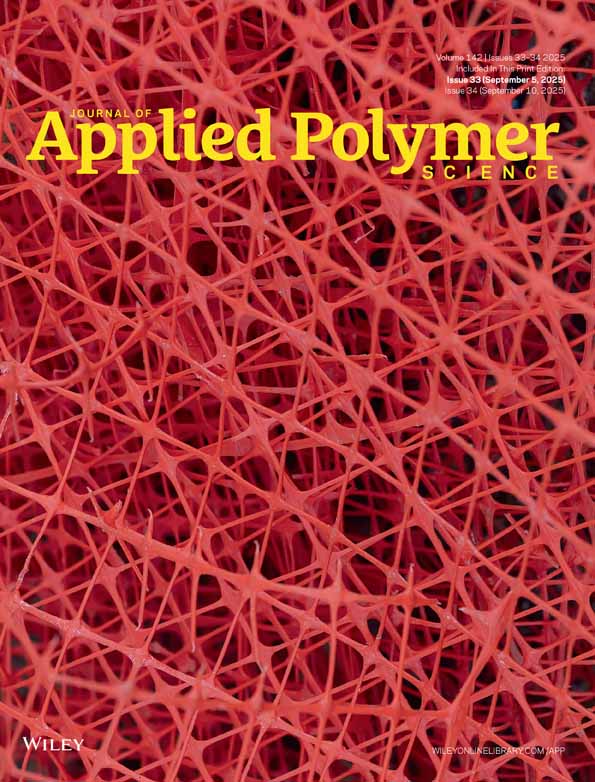Chemical modification of rigid poly(vinyl chloride) by the substitution with nucleophiles
Abstract
The reaction of rigid poly(vinyl chloride) (PVC) with iodide, hydroxide, azide, and thiocyanate as nucleophiles (Nu) in ethylene glycol (EG) resulted in the substitution of Cl by Nu additional to the elimination of HCl, leading to the dehydrochlorination of the rigid PVC. High substitution rates were observed for hydroxide, azide and thiocyanate, while the addition of iodide accelerated predominately the elimination of HCl. The substitution by thiocyanate resulted at 150°C in both thiocyanate and isothiocyanate structures, whereas at 190°C, only isothiocyanate was observed in the polymer. The dehydrochlorination yield increased with an increasing molar SCN/Cl ratio, resulting in a maximum substitution at high molar SCN/Cl ratios. When EG was replaced by diethylene glycol (DEG) as solvent, the dehydrochlorination was found to be accelerated. It was assumed that DEG has a higher compatibility with PVC, making it easier to penetrate the rigid PVC particle. For triethylene glycol (TEG), the rapid dehydrochlorination resulted probably in the coverage of the surface of the PVC particle by methyl methacrylate/butadiene/styrene (MBS), preventing the penetration by the solution. The substitution/dehydrochlorination ratio decreased in the order of EG > DEG > TEG because of the declining polarity of the solvent, stabilizing the activated SN2 complex. © 2009 Wiley Periodicals, Inc. J Appl Polym Sci, 2010




